Southwest Michigan field crops update – July 18, 2024
More rainfall this week left fields and crops saturated, which affected field work. Most soybeans and corn throughout the region are in or entering reproductive stages.

Weather
More precipitation early this week (over 3 inches in some places) further impacted fieldwork and crop health. In the past month, southern Michigan has received between 200-300% more rainfall than normal. Several fields have standing water. As many crops enter peak water uptake, the soil profile will be able to provide that water. Cooler and drier weather is expected throughout the weekend, with the next opportunity for precipitation forecast to arrive Tuesday, July 23. As next week continues, temperatures are expected to increase.
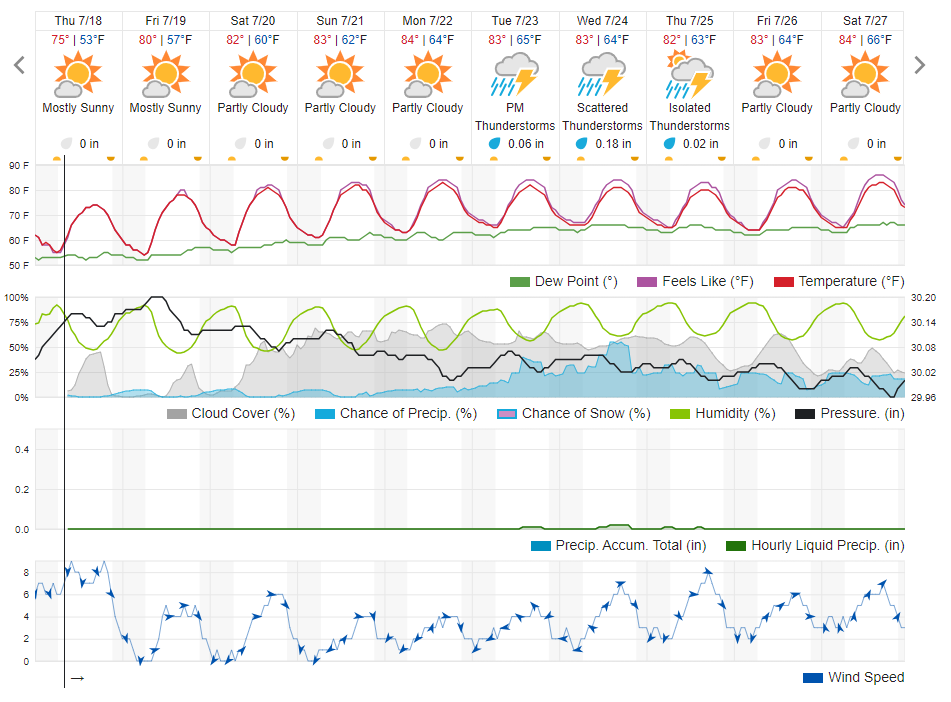
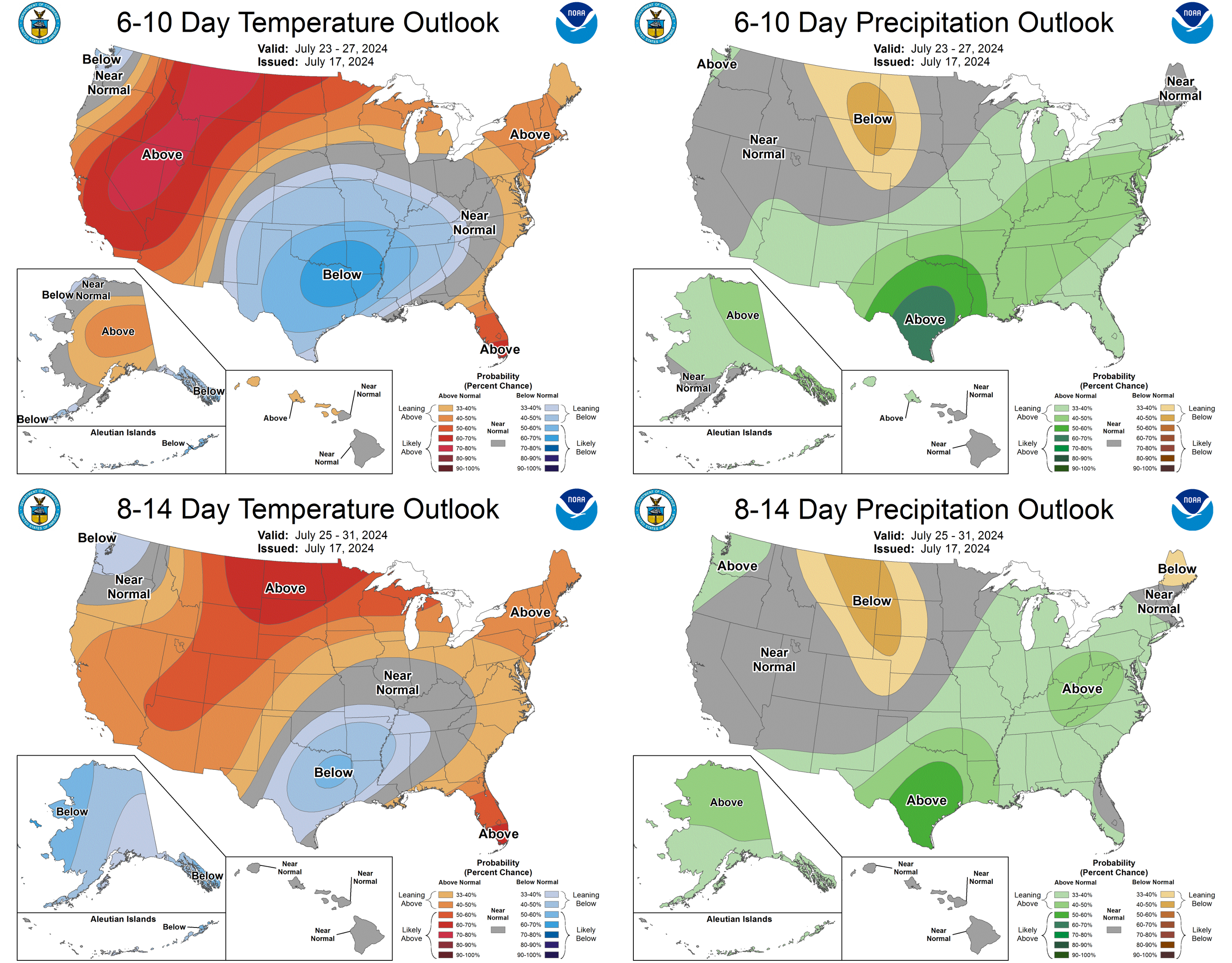
Crops and pests
Most soybeans range from R2 to R5. According to “Identifying soybean reproductive growth stages” from Michigan State University Extension R3 begins when any of the four uppermost nodes with a fully developed leaf has one pod of just under 0.25 inches (3/16-inch to be precise). At R4, one pod on any of the four uppermost nodes (with a fully developed leaf) is 0.75 inches long. A soybean enters R5, referred to as beginning seed, when a pod in one of the four uppermost nodes (with a fully developed leaf) has a seed 1/8 inches long.
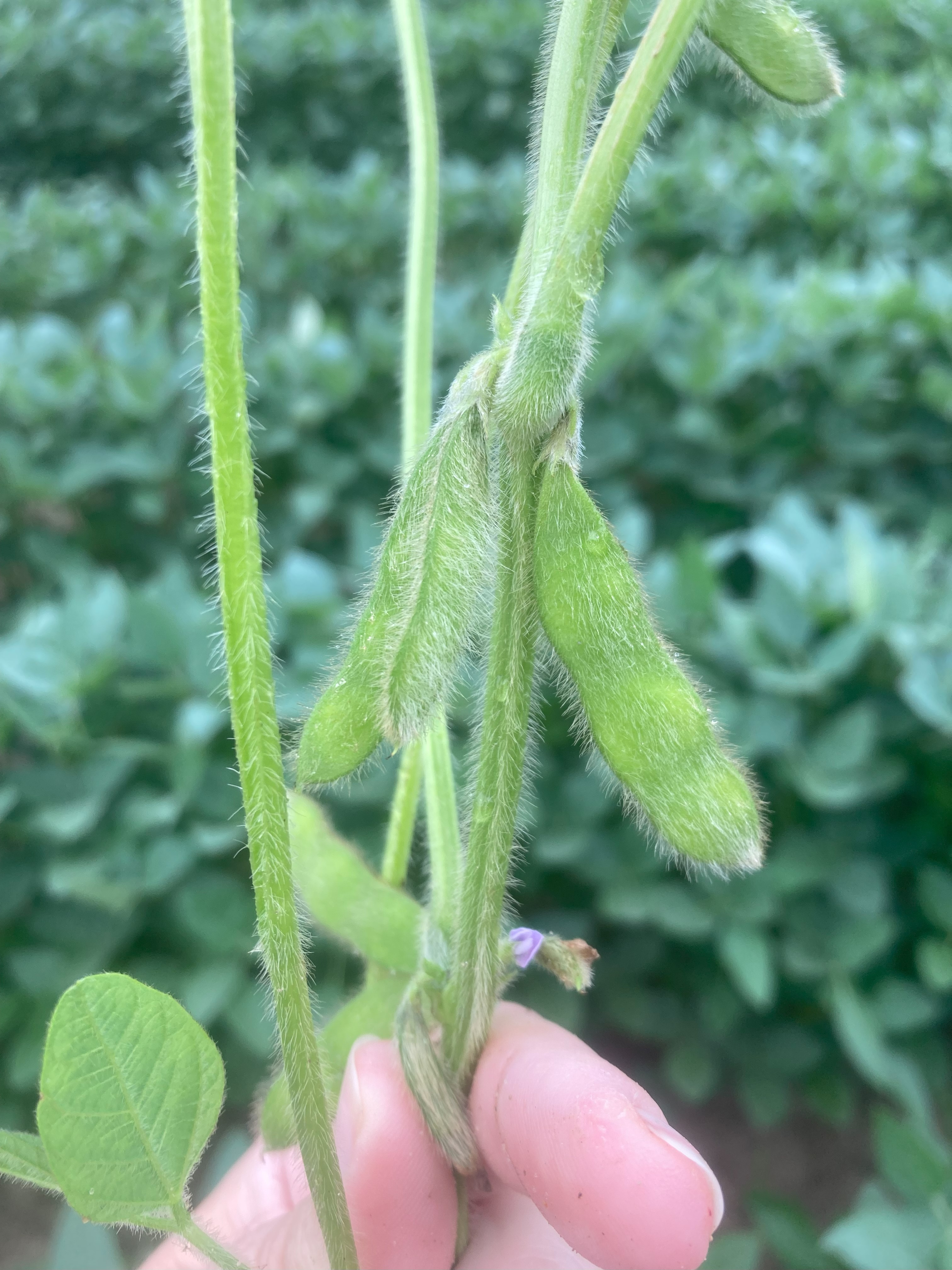
The window for white mold application is slowly closing as more soybeans advance through the reproductive stages. For those still between R1 and R3, the Sporecaster app shows high white mold risk in nearly all counties in southwest Michigan for July 18, 2024. Other disease pressures include bacterial blight and septoria brown spot, although neither are reported to be present at concerning levels.
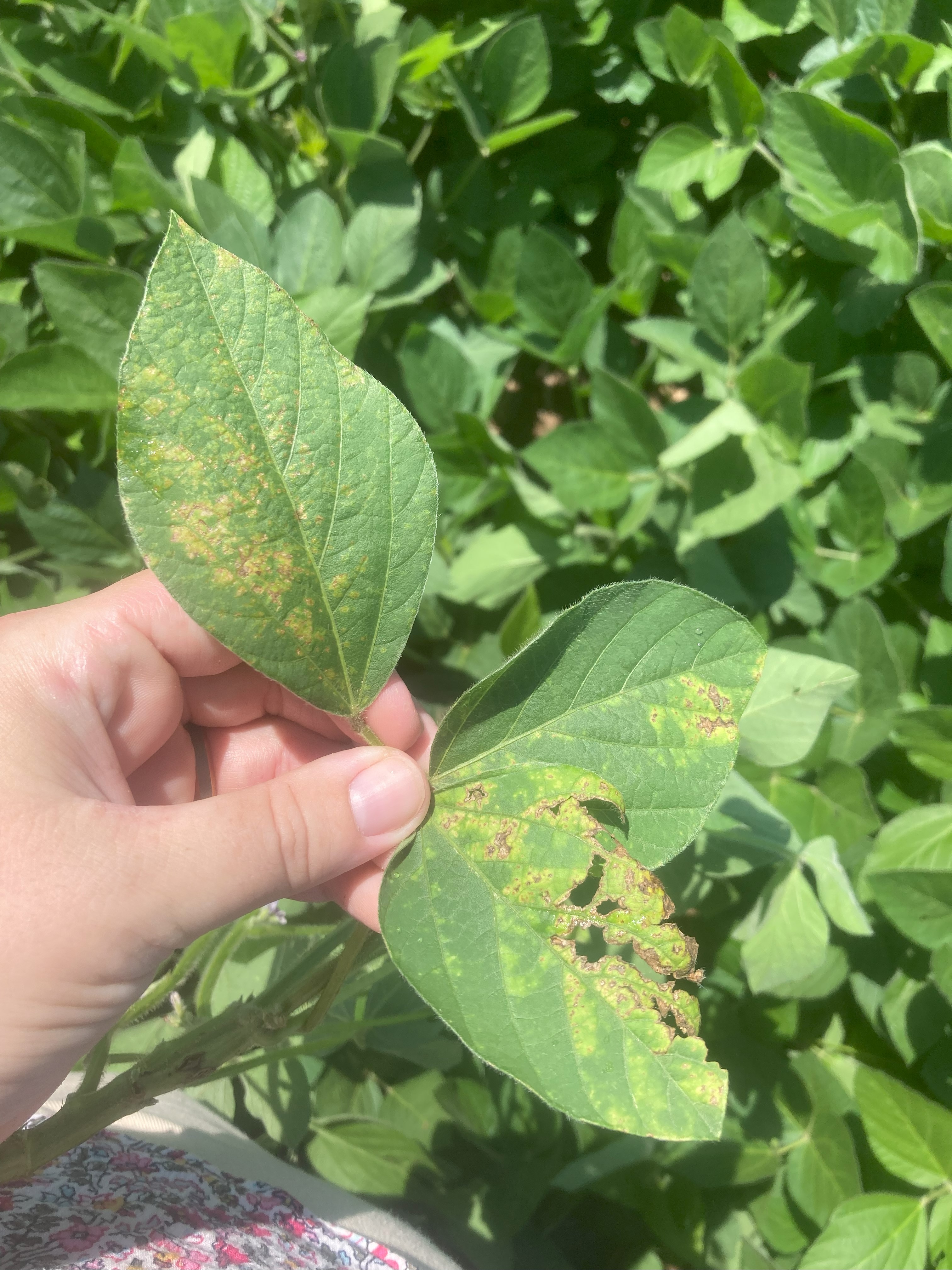
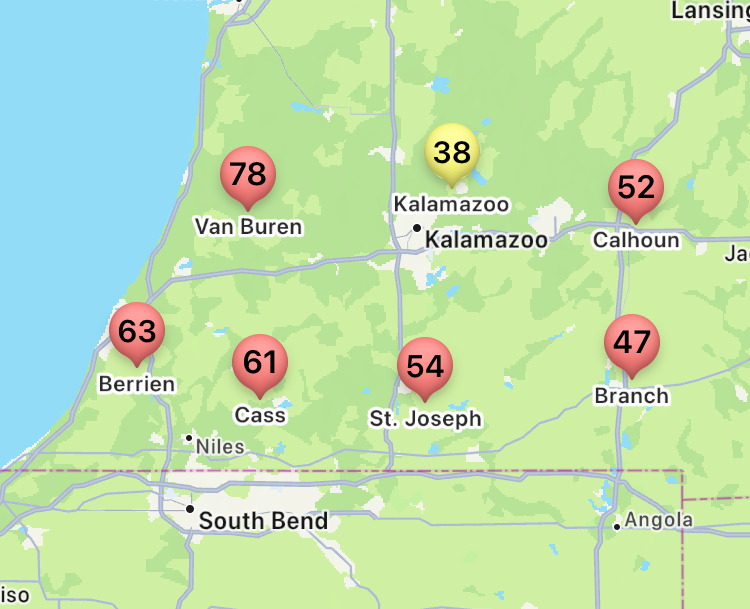
Many acres of both seed and commercial corn had tassels out this week. Seed corn detasseling began a couple weeks ago and continued in earnest this week. Commercial corn is mostly between R1 and R2. R1 is defined as silk outside the husk, and R2, referred to as blister, has kernels filled with clear liquid.
Tar spot has been found in Branch, Calhoun and St. Joseph counties so far. This does not necessarily mean that sprays are needed in all those counties. However, it does mean that scouting should be occurring. Focus on areas that might hold moisture, such as western tree lines or standing water under a pivot. Watch for the small black raised lesions of tar spot and use moisture to rub at the spots on the leaf to make sure they are truly lesions and not just insect frass (insect poop). Flip the leaf over to see if the lesion continues to the underside. Check out the Michigan State University (MSU) Extension article "Managing tar spot in corn" and the Field Crops Virtual Breakfast – White Mold in Soybeans and Tar Spot in Corn with MSU pathologist and Extension specialist Marty Chilvers for more information. The Tarspotter app shows low tar spot risk for July 18, 2024.
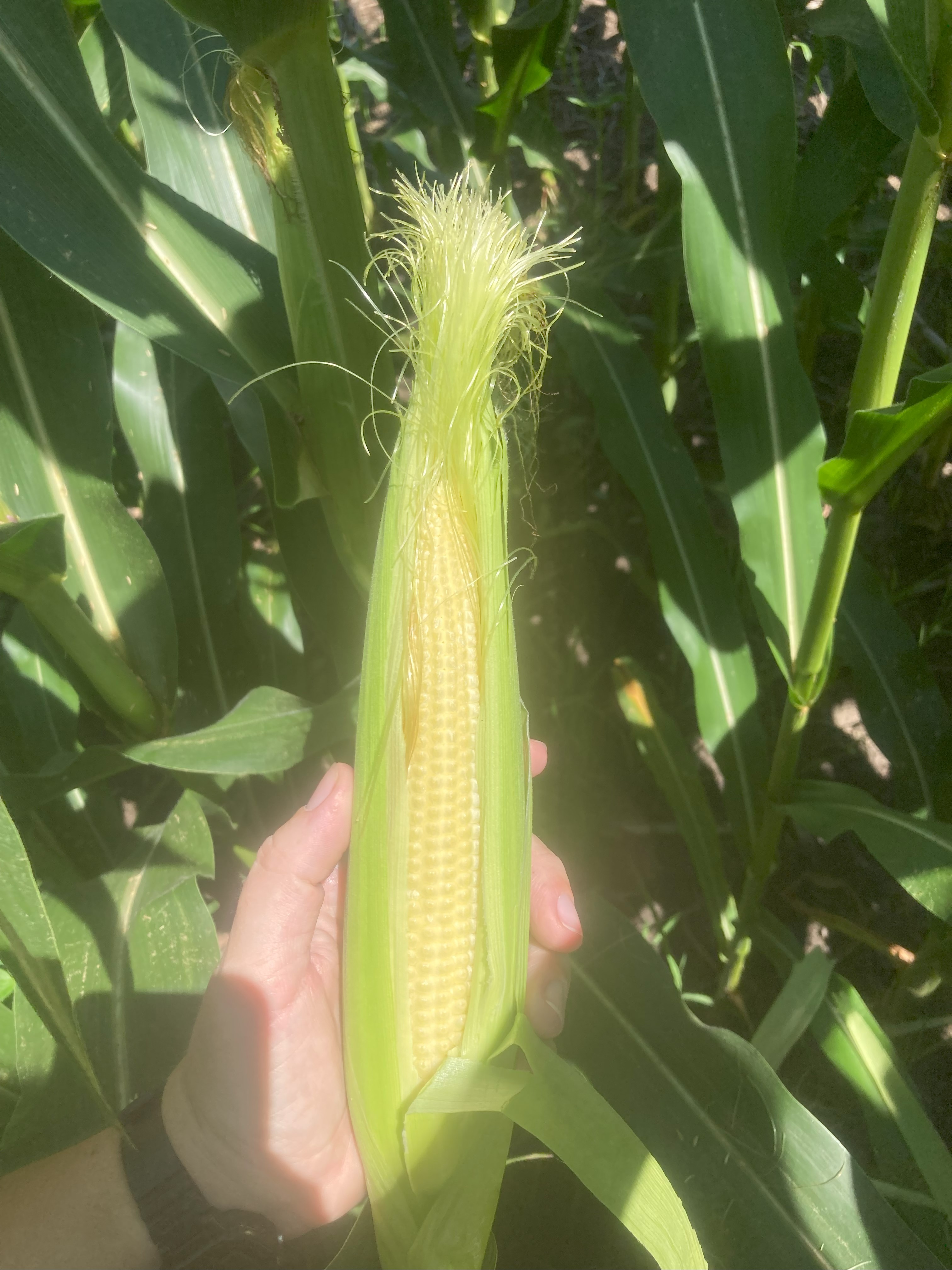
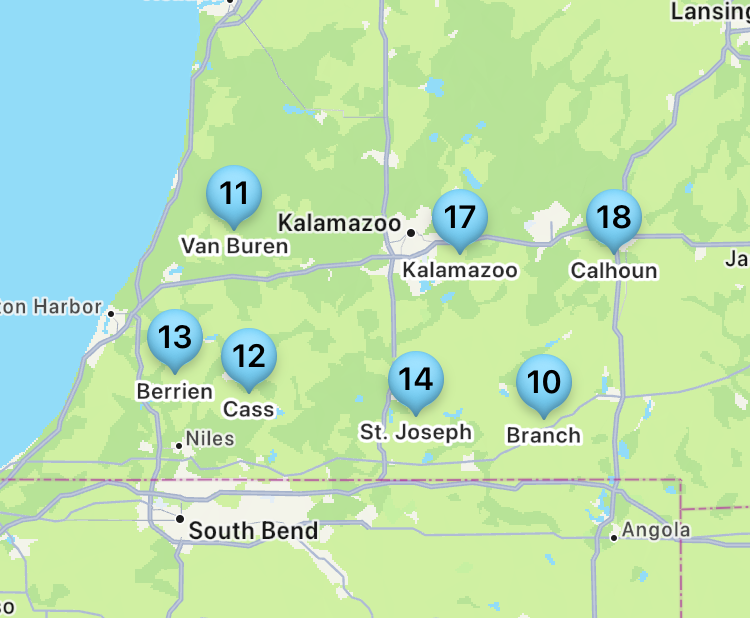
Western bean cutworm moth counts were down this week in most areas. Scout at ear level and above for western bean cutworm. Timing and coverage are most important for controlling western bean cutworm. Although not causing significant yield loss, it opens the ear up to pathogens and quality issues, particularly Gibberella ear rot. The risk model for Fusarium head scab shows that risks for Gibberella ear rot are high right now. Bucket traps in Branch (near Union City), Berrien (near Eau Claire), Cass (near Cassopolis) and St. Joseph (Centreville and Sturgis) counties have caught the following:
|
Date |
Berrien |
Cassopolis |
Centreville 1 |
Centreville 2 |
Sturgis |
Union City 1 |
Union City 2 |
|---|---|---|---|---|---|---|---|
|
6/24 |
2 |
0 |
6 |
9 |
0 |
5 |
3 |
|
7/1 |
1 |
81 |
29 |
46 |
29 |
61 |
4 |
|
7/8 |
4 |
123 |
40 |
34 |
22 |
90 |
31 |
|
7/15 |
10 |
57 |
24 |
11 |
16 |
79 |
37 |
.jpg?language_id=1)
Vine rot and pathogen inoculation risks continue in potatoes. Vine kill began on some early Russet fields, which puts potential harvest around the first week of August—much earlier than normal.
Alfalfa and forage crops resumed cutting and baling activities over the weekend and in the past couple days where possible. The forecast shows several days without precipitation coming up, so this will provide a good window of opportunity for cutting crops that are still standing and baling what has been cut.
Weekly water use
|
Estimated weekly crop water use for field crops in Michigan (in/week) |
||||
|---|---|---|---|---|
|
Crop |
Growth stage |
Constantine |
Entrican |
Hart |
|
Corn |
V8 |
0.71 |
0.67 |
0.72 |
|
V10 |
0.97 |
0.91 |
0.97 |
|
|
V12 |
1.28 |
1.20 |
1.28 |
|
|
VT |
1.40 |
1.32 |
1.40 |
|
|
Silk, Dough, Blister |
1.40 |
1.32 |
1.40 |
|
|
|
V3 3rd node |
0.77 |
0.72 |
0.77 |
|
Soybeans |
R1 Beginning bloom |
1.28 |
1.2 |
1.28 |
|
R2 Full bloom |
1.40 |
1.32 |
1.40 |
|
|
R3 Beginning pod/Pod filling |
1.40 |
1.32 |
1.40 |
|
The table above presents estimated crop water use for various field crops across three locations in Michigan. This data helps irrigation management decisions by showcasing potential crop evapotranspiration, calculated based on reference evapotranspiration and crop coefficients for each crop growth stage. It is crucial to note that crop water use values vary across regions due to differences in weather conditions, growth stages, agronomic practices and soil properties.
When using these values for irrigation scheduling, be mindful that they assume all applied irrigation water will be utilized by the plants without any loss. Additionally, these values do not account for any precipitation that may occur during the week of calculation. For more tools and information on irrigation scheduling tools, please refer to: Irrigation Scheduling Tools.
Reference evapotranspiration data was obtained from MSU Enviroweather, which also offers a model for determining potential crop evapotranspiration. To access this tool, visit Enviroweather, click on "Crops," select your crop and use the potential evapotranspiration tool by choosing your nearest weather station, the latest date of interest and other crop information.
Field Crops Virtual Breakfast Series
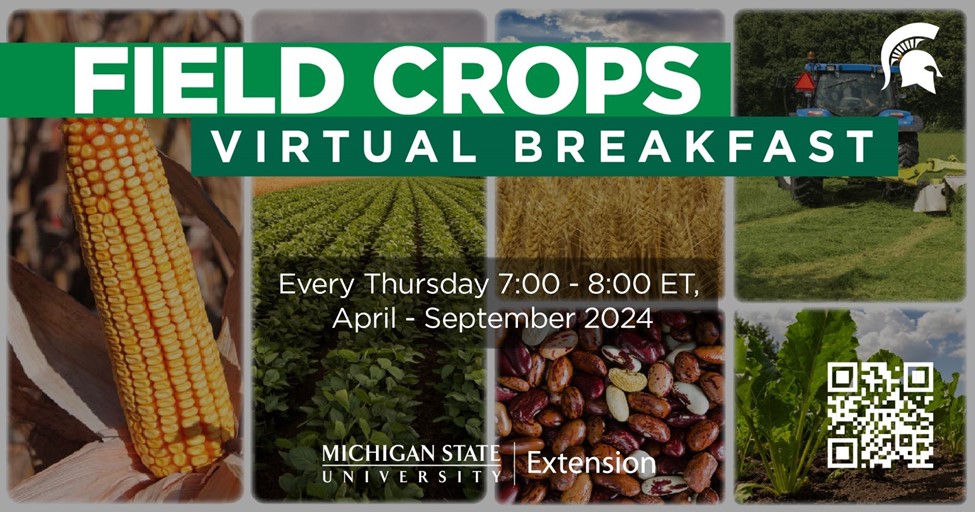
White mold in soybeans and corn tar spot, presented by MSU pathologist and Extension specialist Marty Chilvers, was the topic for the MSU Extension Field Crops Virtual Breakfast this week. Management factors for white mold and tar spot were the focus. Recordings of this and all the Virtual Breakfast meetings are closed-captioned and available at the Field Crops Virtual Breakfast webpage and the MSU Extension Field Crops Team social media platforms: Facebook, Spotify, YouTube, Apple Podcasts, and Twitter @MSUExtension.



 Print
Print Email
Email




